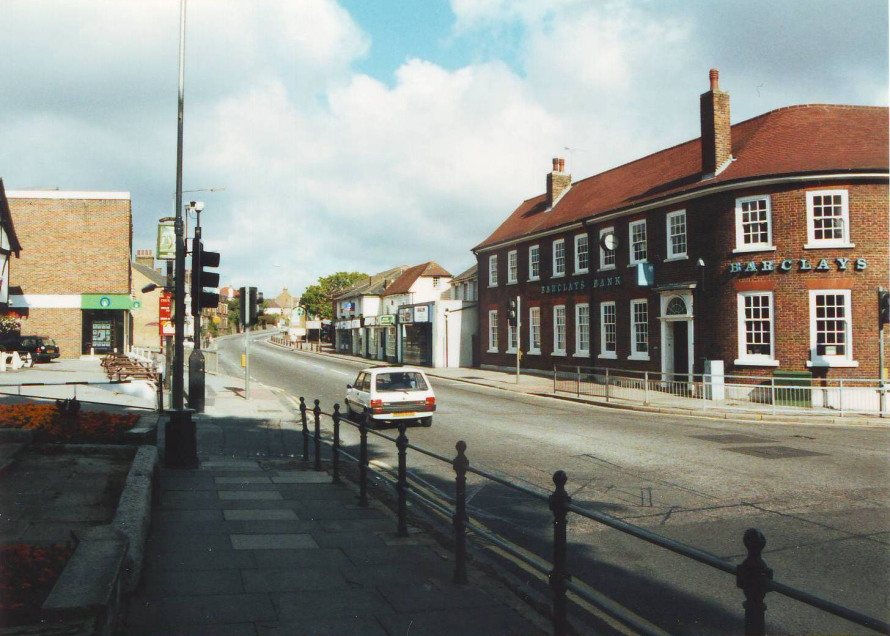This leaflet advertising Abbey Homestead's Berengrave Park Project was developing the new estates of Childscroft Road, Chalky Bank Road, Parkfield adjacent to Berengrave Lane and the north side of the railway line. This development would have been during the late 1950s/early 1960s at a similar time to the Tilbury Road estates (details of Finwell Road Rainham 1967 - Rainham House Prices) on the opposite side of Station Road. The other roads included were Roystons Close, Bushmeadow Road, Wooldey Road, Dignals Close and Iversgate Close.
If you have any old photos taken on the estate that you could share it would be great to see them - please email This email address is being protected from spambots. You need JavaScript enabled to view it.
Photo below of Chalky Bank Road in 1961
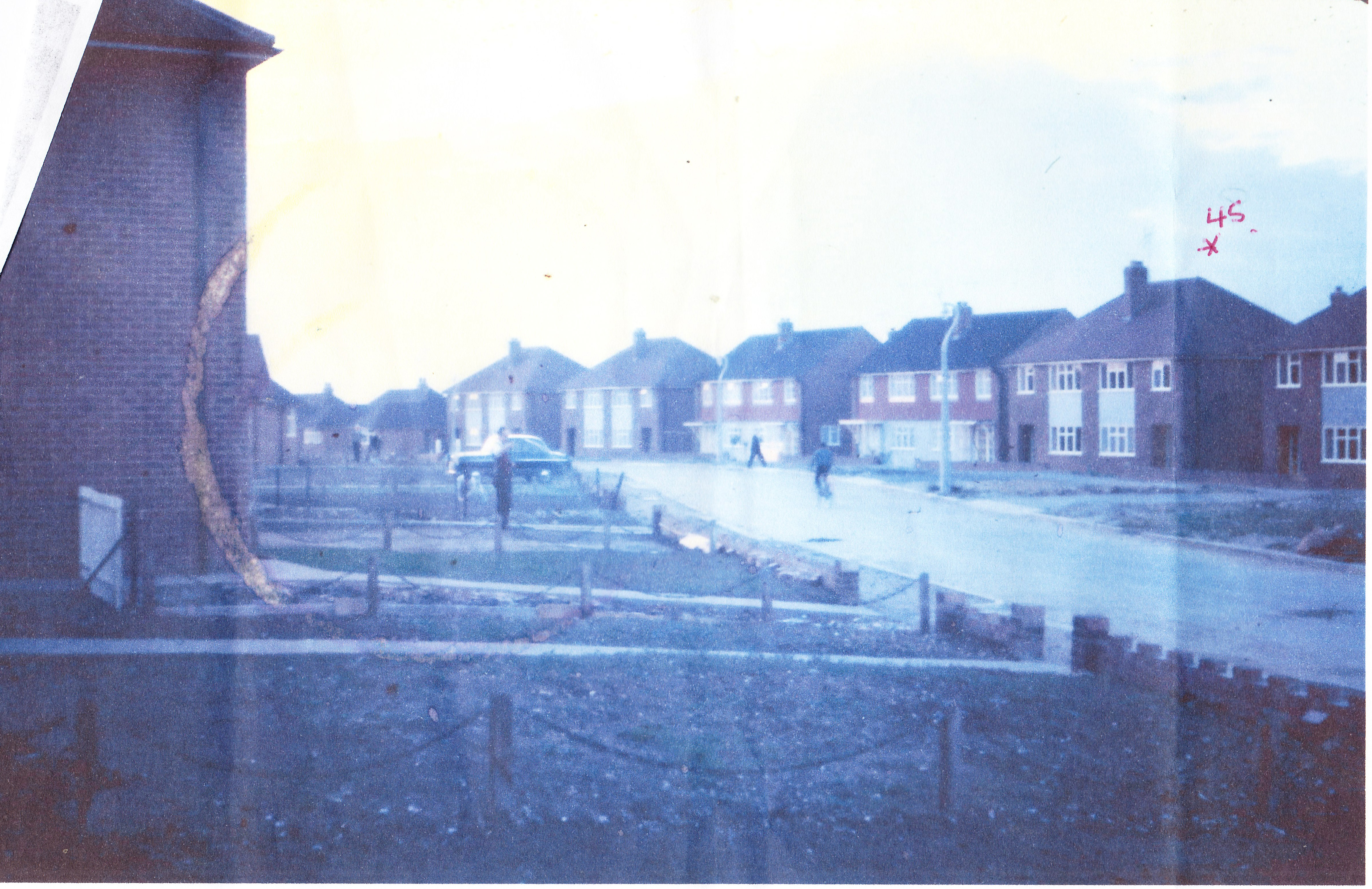
There are also leaflets for the Parkwood estate building in the 1960s here - Parkwood Wards Homes Sales Brochures and Promo Leaflets 1960s
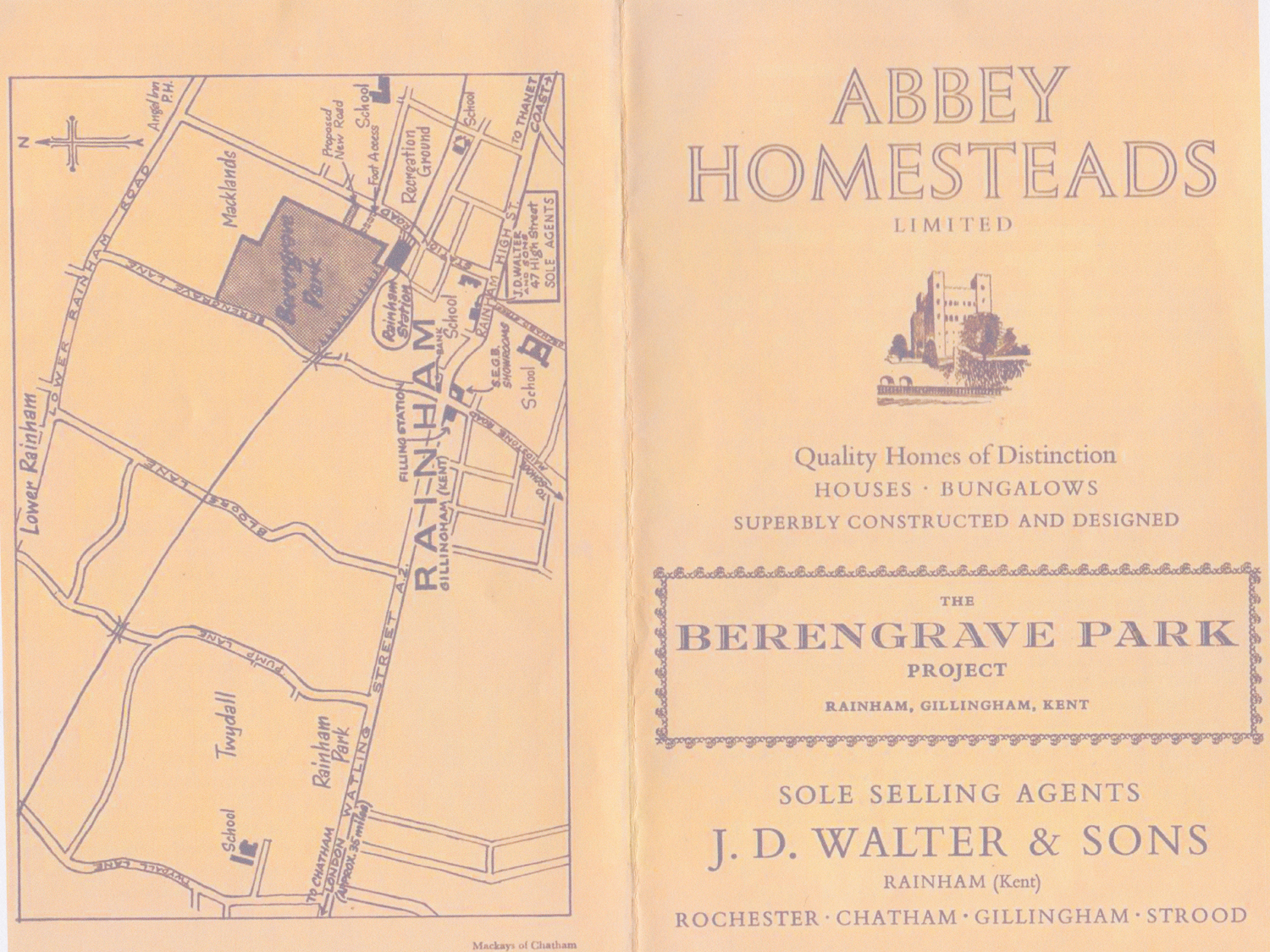
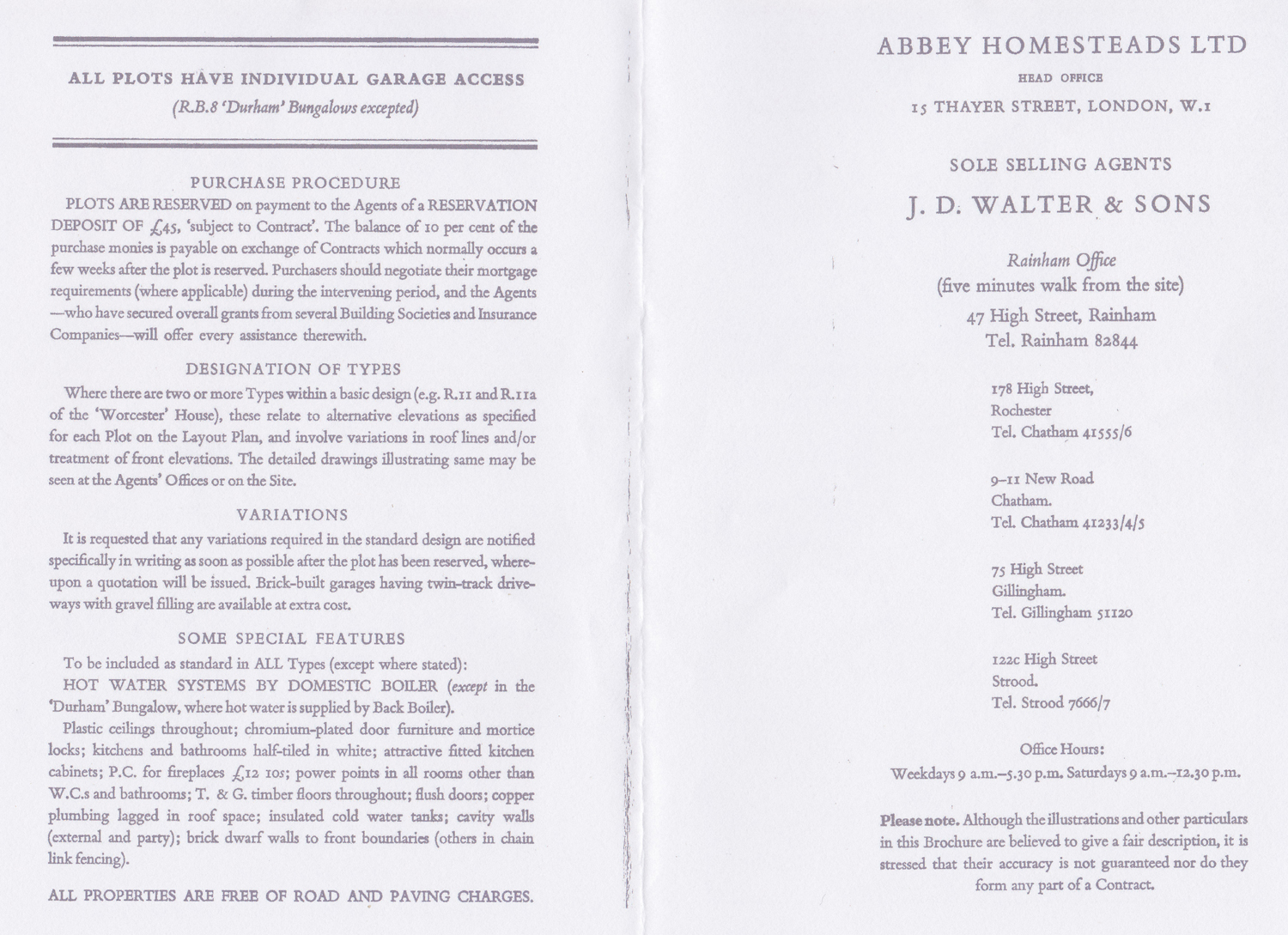
- Details
- Category: History Articles
Rainham Mark Building Estate was the name given to the development of Marshall Road, Edwin Road and Sylvan Road in the early part of the twentieth Century. Other old photos of Marshall Road are here
If you have any old photos taken on the estate that you could share it would be great to see them - please email This email address is being protected from spambots. You need JavaScript enabled to view it.
The land for Marshall Road and Edwin Road was sold off in the early 1920s with houses being constructed soon after. Unlike modern housing estates that are developed by a single company these were sold off as individual plots of land for the owner to build their own house or bungalow on. There was a 20ft building line specified which made sure houses weren't too close to the road. This was a very similar situation with my grandmother's house in Woodside that she had built in 1939 - read here and see the plans Costs of Building in Woodside,Wigmore 1939
Plots were sold off in various sizes - some were 20 foot wide, some 40 foot and some 60 foot by being combined so they were wider than the original sales brochures suggested. The 40 foot plots were £60 and the 60 foot wide plot for the house shown cost £90 by combining one plot and half of the next one as can be seen in the map and documents below.
You can see on this photo of Rainham Mark in 1920 that the photo would have been taken roughly where junction between Edwin Road and A2 Watling Street is now but it's unclear if Edwin Road was here at the time. Note the advert on the side of the shop for Esi-Run Villas from £395 which were the houses on Caldew Avenue, Hawthorne Avenue and Begonia Avenue which was being developed along with other sites at that time but those houses were being sold as complete buildings to move into rather than selling off the plots of land. The difference was that it cost £395 for the fully built house or £60 for the plot of land.
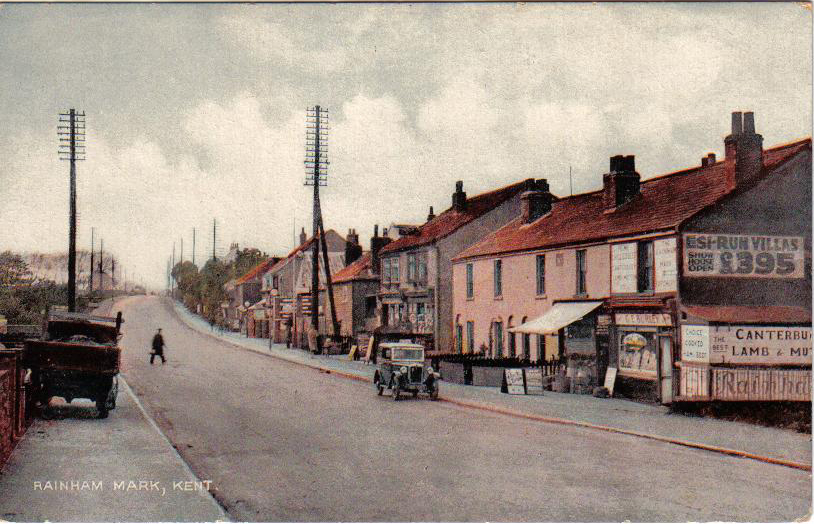
The roads were named after Marshall Harvey and Edwin Jelly who owned and sold the land. From the contract details that I've seen it would suggest that Marshall Harvey and Edwin Jelly jointly acquired the land for what they called the Rainham Mark Building Estate and then parcelled it off to sell to individuals. Other land around was still owned by the War Department (now Tesco Extra and A289 link road & Gillingham Business Park) and Lord Hothfield. Marshall Harvey is listed as being the Accountant for the Wakeley Brothers in 1888 and involved in other land deals around Rainham. Edwin Jelly owned a menswear shop on the A2 but both men were members of Rainham Cricket Club so may well have devised their plans after meeting at a cricket match. Lord Hothfield was a major landowner linked to the cricket club so may have sold the portion of land for the estate to Harvey & Jelly through the Cricket Club connection.
The map below shows the plots from the A2 upwards that were being sold off along with Sylvan Road. For some reason Sylvan Road was never adopted as a highway so is still unmade to this day but Marshall Road and Edwin Road were both tarmac. The next map shows the adjacent section of Marshall and Edwin Roads up to where they meet. The Platters Farm/Goldings Estate is shown as Lord Hothfield's land on the map.
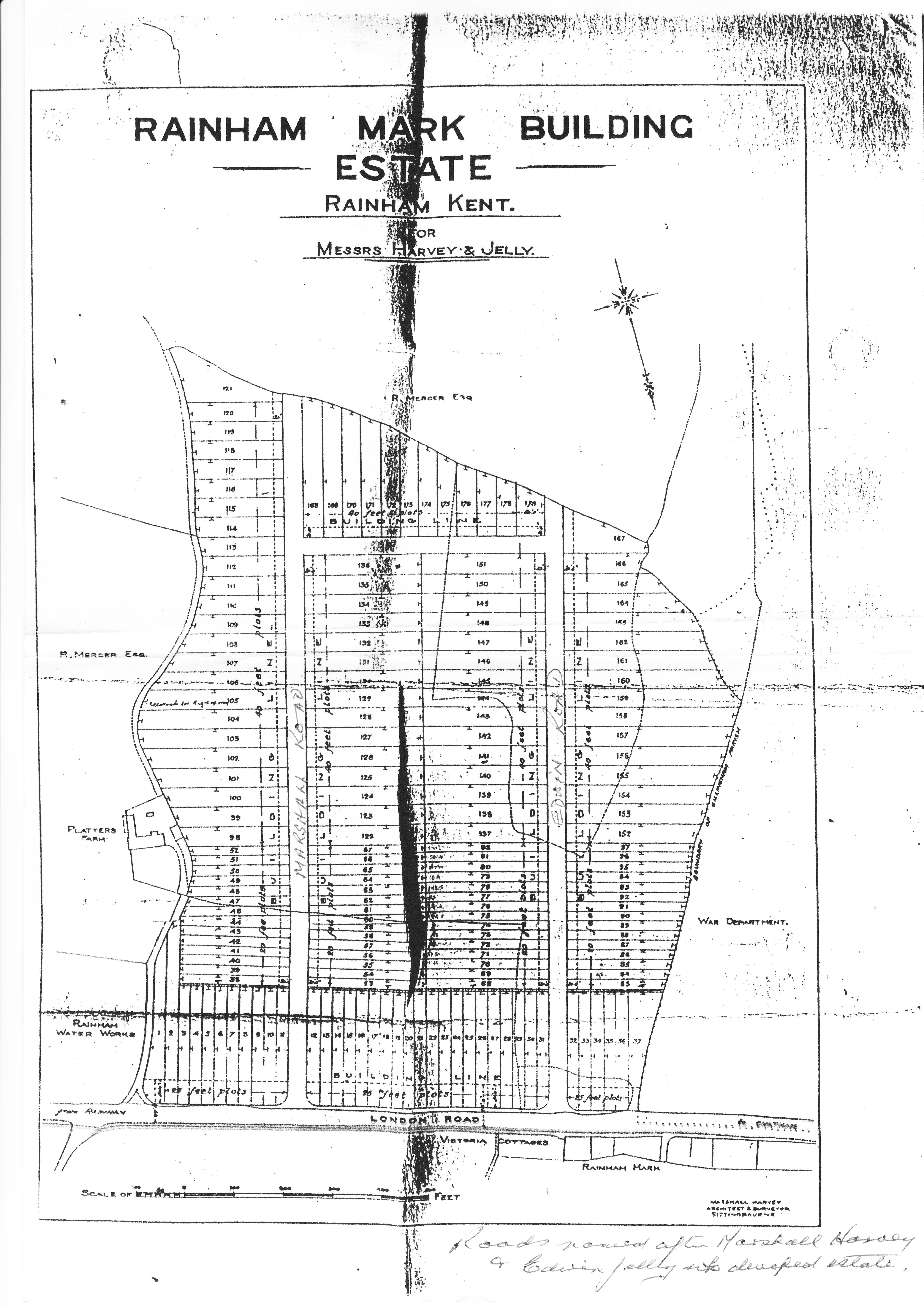
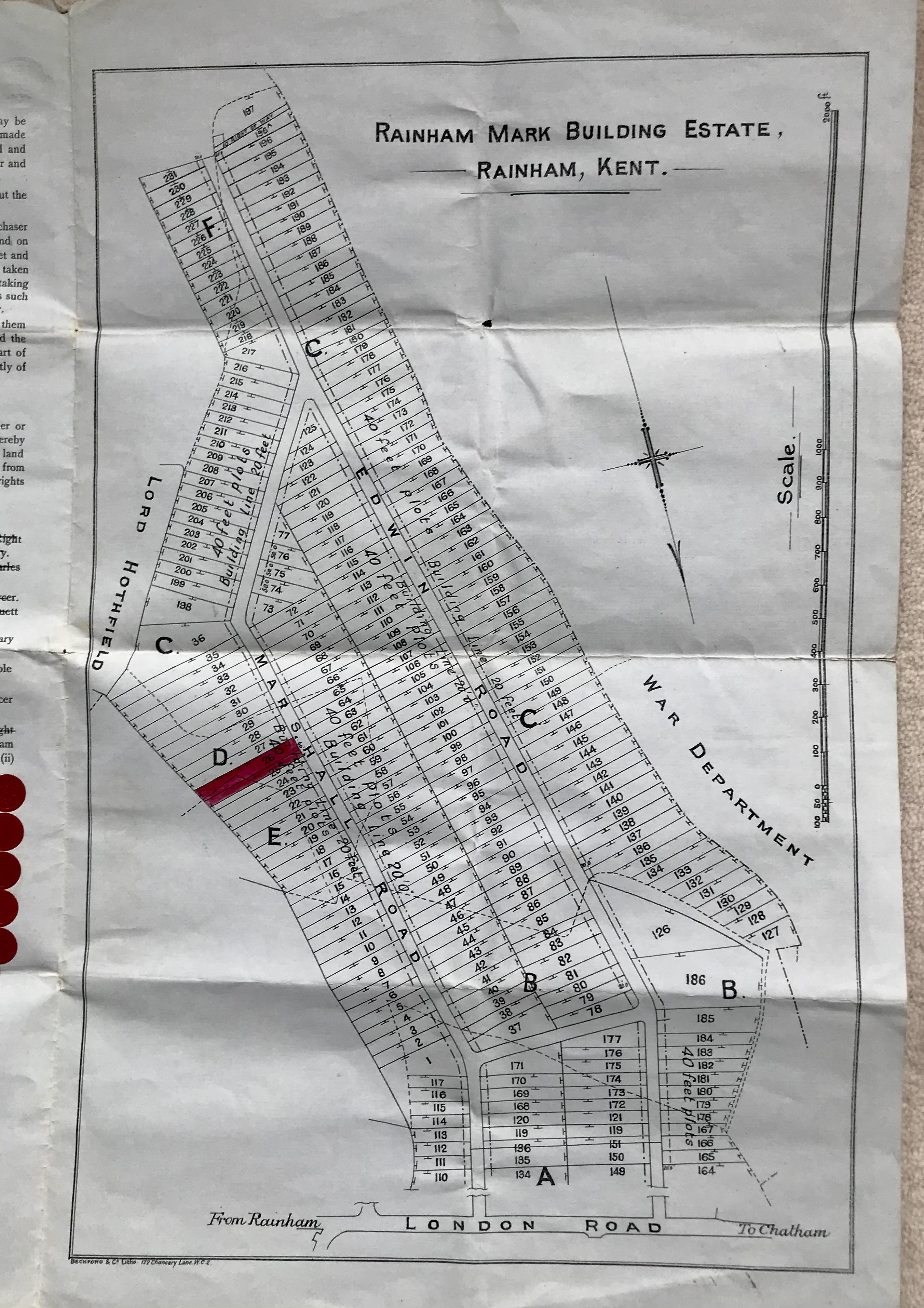
The photo below was taken shortly after the house was constructed on Marshall Road, you can see the huge pile of flints to the side of the road. In terms of dating the photo the car has registration PU7306 which would have been issued between July 1923 and Sept 1925 so the photo must have been taken after this date. The land was sold in May 1923 so construction of the property probably took place soon afterwards. This photo is believed to have been taken in 1928 which would tie in with the age of the car and the sale of the land in 1923 - there is already marking on the roof so it's probably a couple of years after being built. You can see the flints piled up that households were required to collect for making the roads and the ones already compacted in the road. After seeing a pothole on Broadview Avenue today the substructure below the tarmac remains as flint which have been distributed from the hole.
The original purchaser was Joseph James Cook of 208 Nelson Road Gillingham who is believed to be pictured driving in the car below
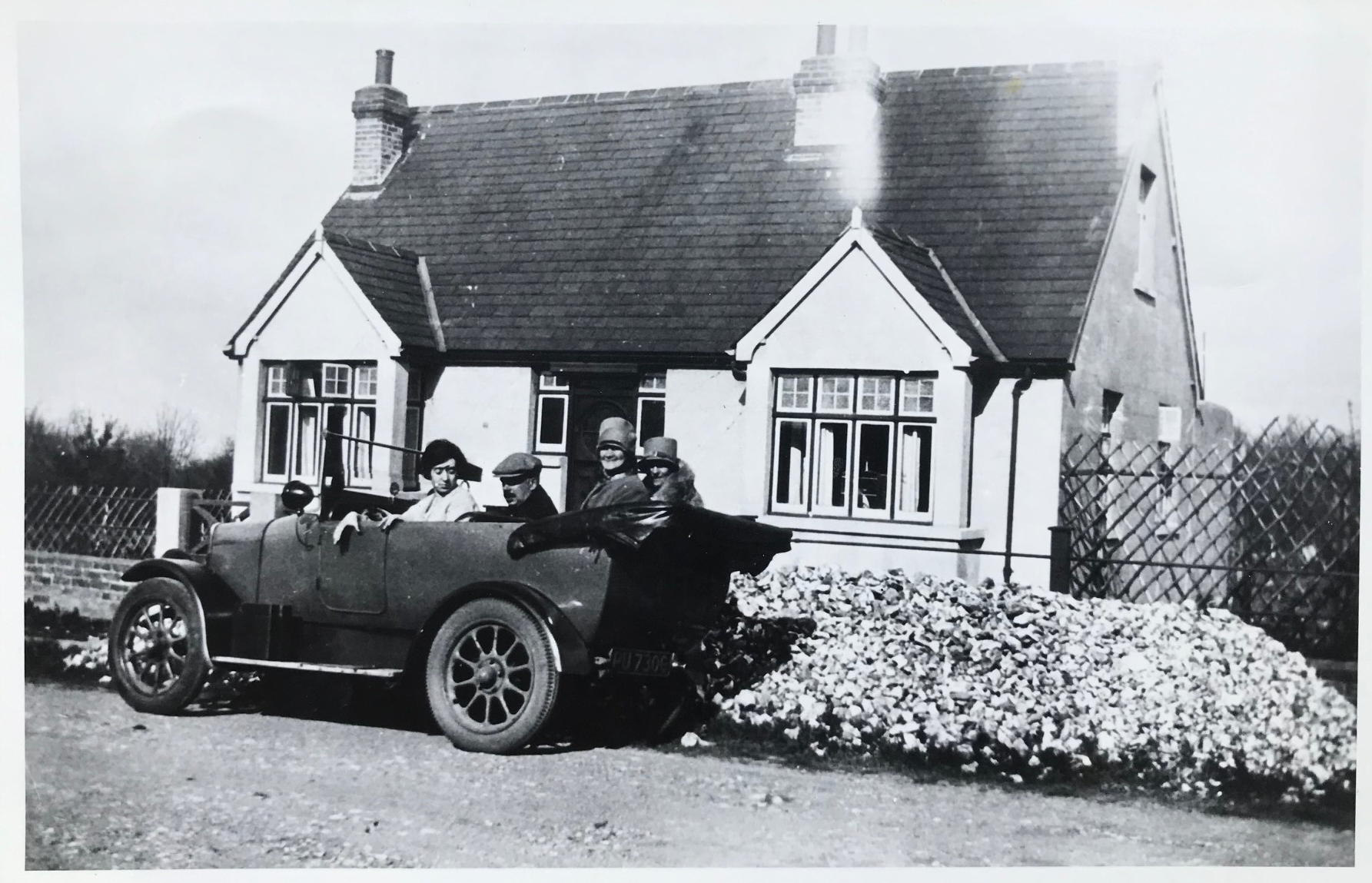
The later photo below shows the same house but around 4 years later. There is now a conservatory added to the side of the house and the hedge/bushes have grown up in the garden and most of the flints have been cleared from in front of the garden wall. The painted walls are starting to look quite shabby and the fascia boards are now black rather than the original white. The below photo is dated 28/4/1932 on the reverse.
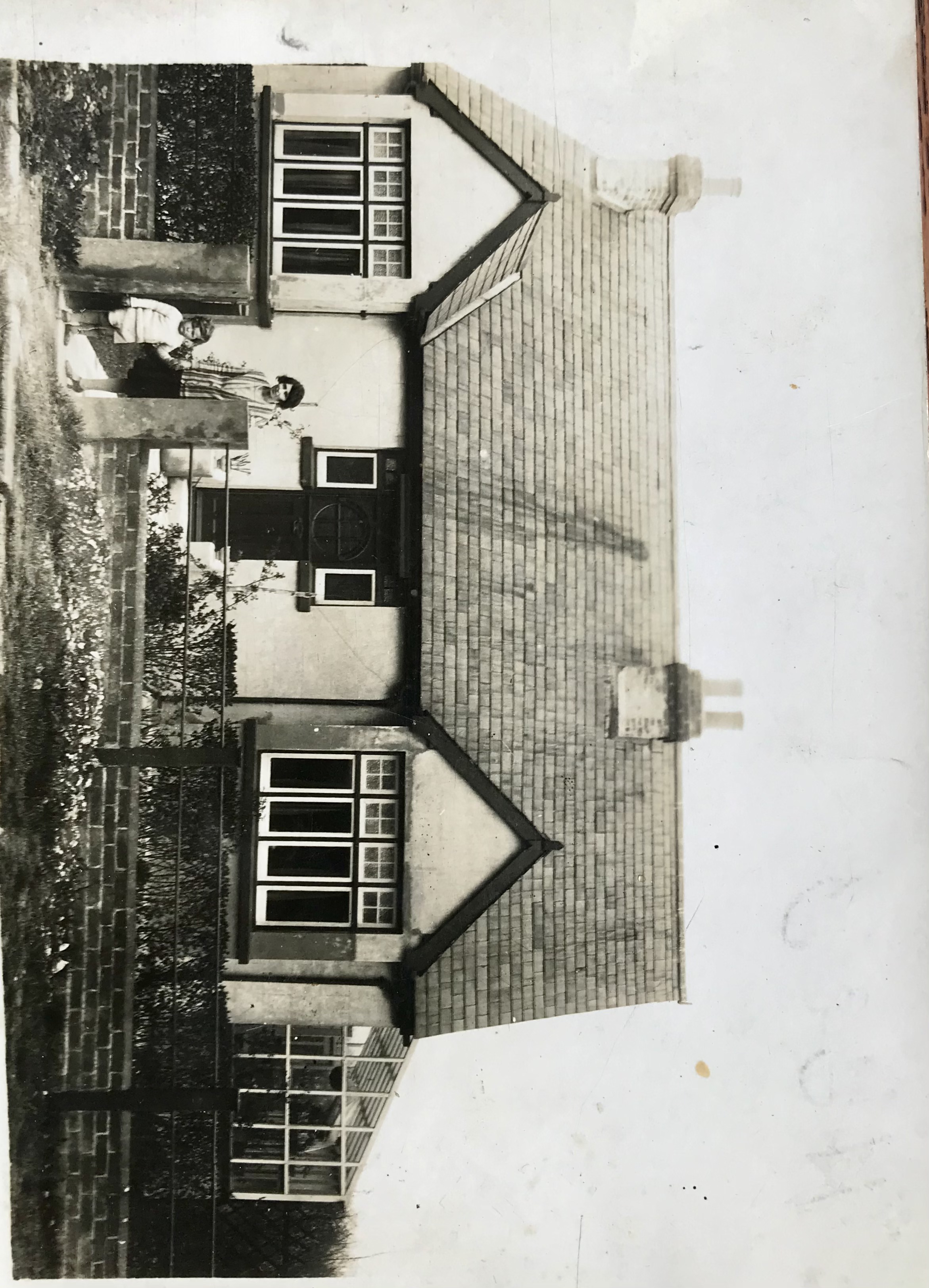
The same house is pictured below in 1972 before major rebuilding works took place that make it unrecognisable now. The chimneys had been removed but the roofline remains the same in this photo, it was changed soon afterwards.
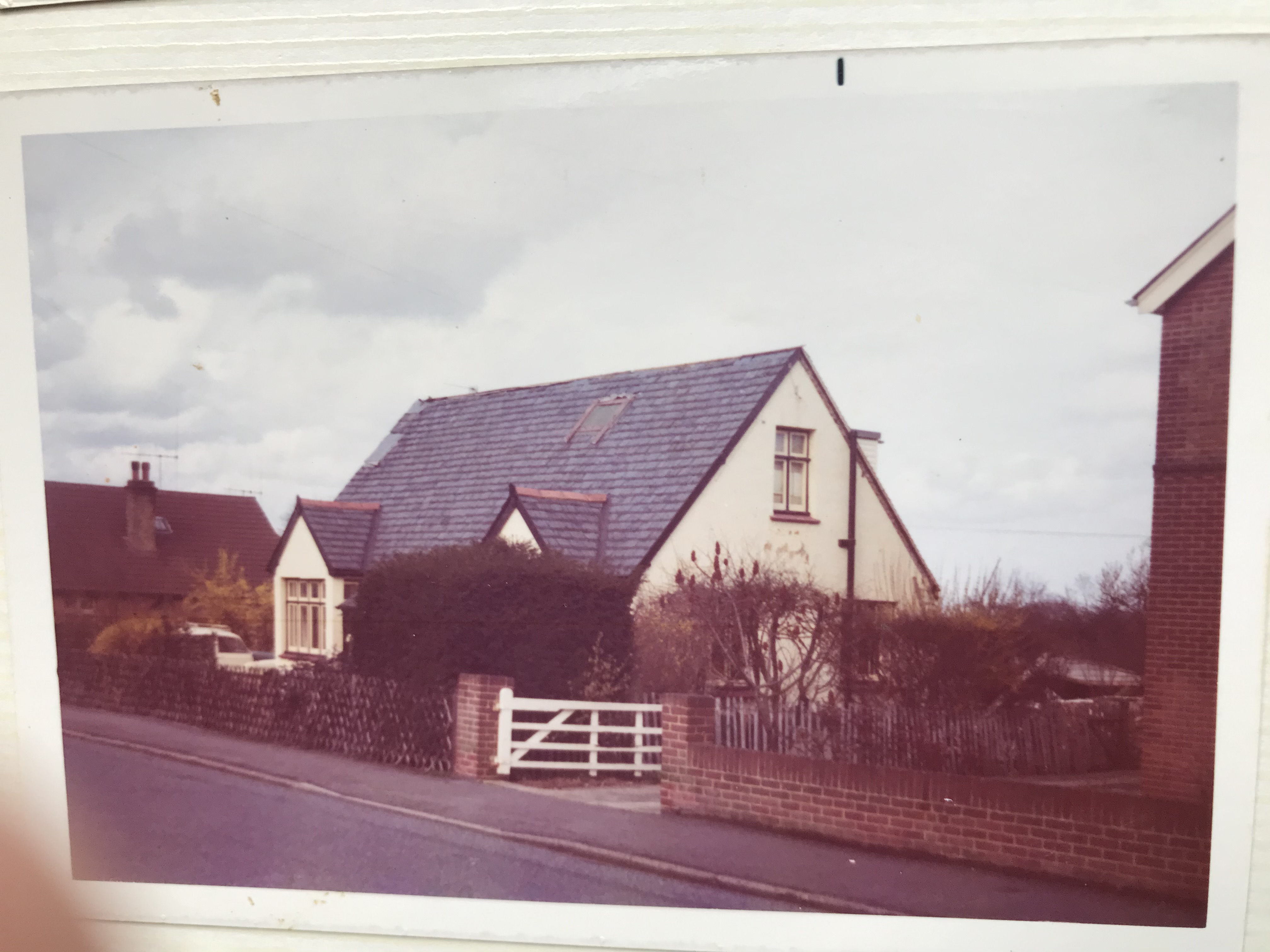
The original deeds for the house show that in 1923 when the land was sold for the building of the house above, the original owner Marshall Harvey had died the previous year in July 1922 and his wife Ellen Harvey and sons Marshall Harvey the Younger and Leonard Harvey were listed as the vendors as a result of being left the land in his will. The plot and a half that was sold cost £90 and contract is laid out with payments of £45 each to Ellen Harvey and Edwin Jelly. Edwin Jelly also owned an outfitter's shop in Rainham High Street Edwin Jelly's Clothing Hat Boot Stores Rainham
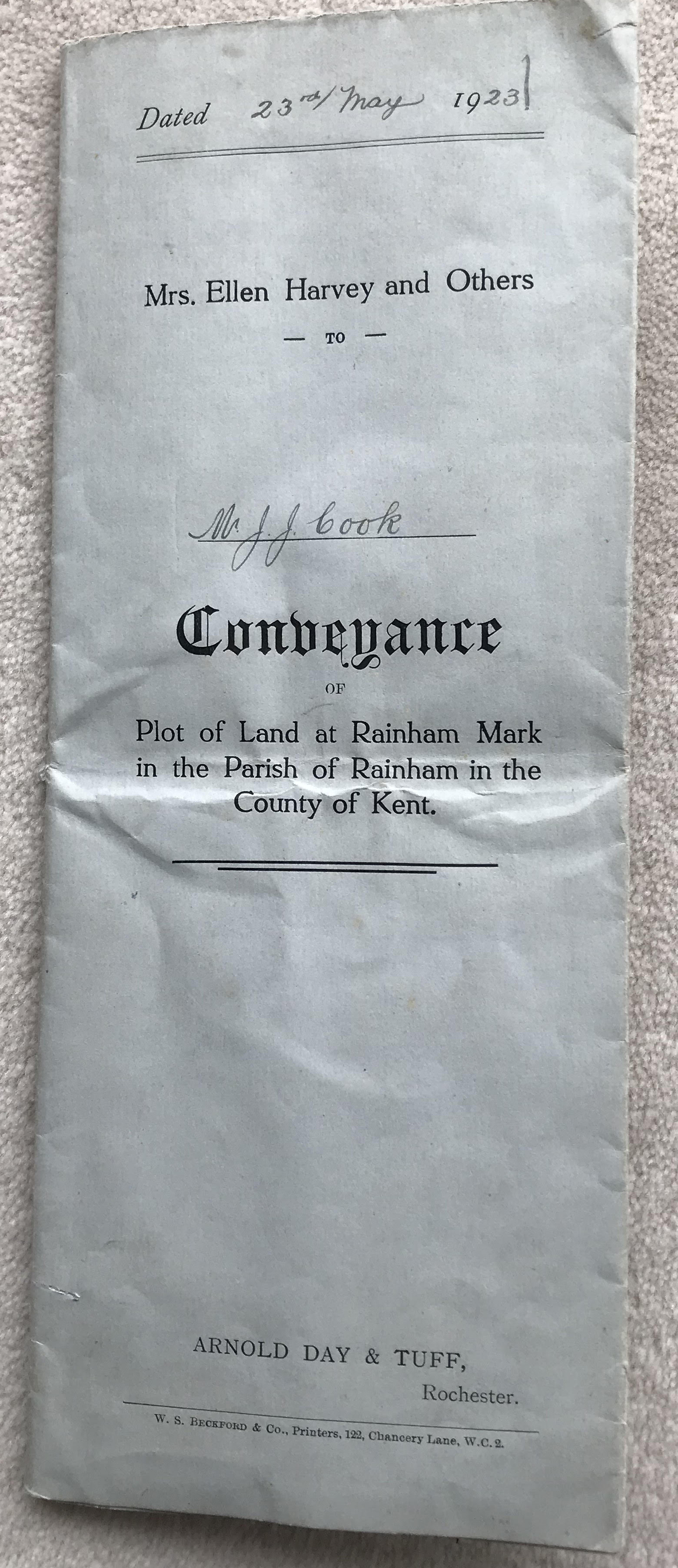
The contractual details specified in the Indenture state that the purchaser cannot build a house of less than £350 in value if it fronts the main road or under £200 in value for a back road. The purchaser is responsible for building a paved footpath in the front of their property within 3 months from completion and is required to maintain half of the road outside their property until it is taken over by the local council.
It's clear from the photos above that the requirement to build a paved footpath in front of the property within 3 months was ignored!
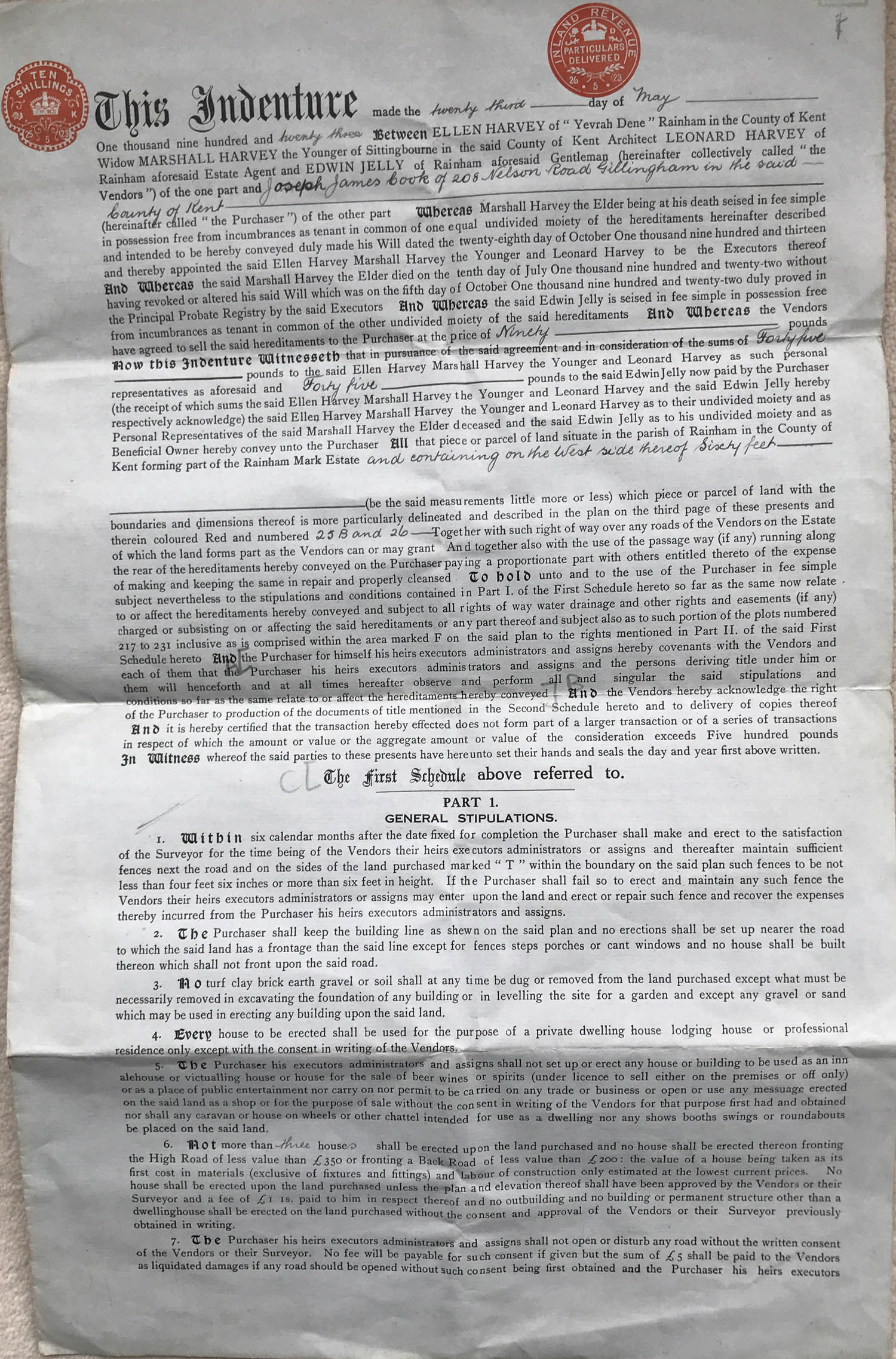
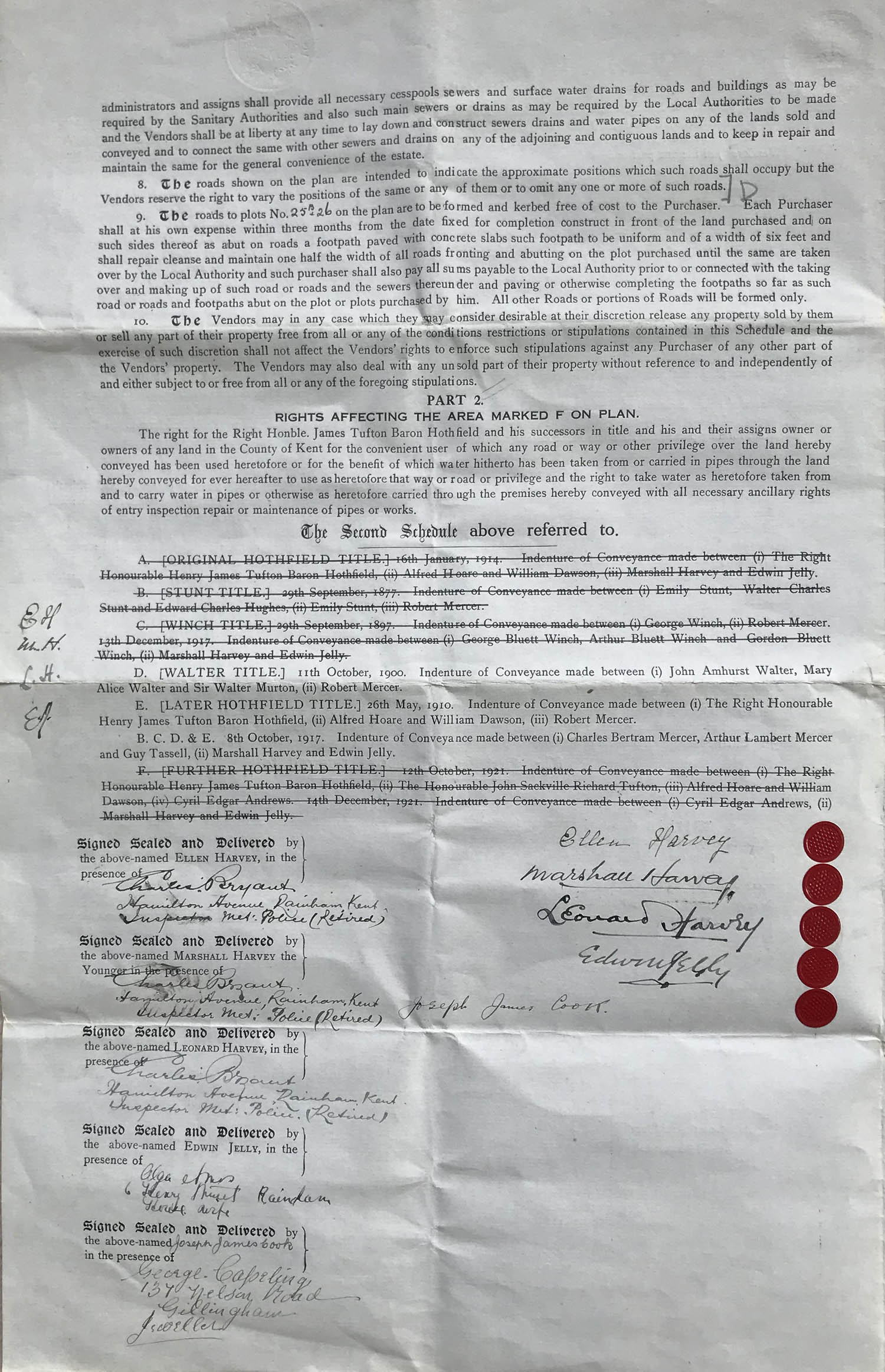
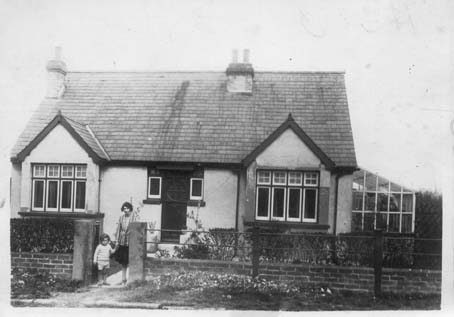
- Details
- Category: History Articles
RAINHAM’S CORONATION CELEBRATIONS by Freddie Cooper
Continued from March 2002
In 1953 the population seemed to be captivated by the Coronation of our young Queen and almost everyone entered into the spirit of the occasion. Rainham was proud to play its part. The most heated arguments occurred afier the event when the Committee had to decide how to dispose of a balance of £164 which was left alter all accounts had been paid. Many ideas were eventually eliminated in favour of a village clock. Barclay’s Bank, at the junction of Station Road and the High Street, was one obvious location but Mr C.D. Lake, the Deputy Borough Engineer, who still lives in Wigmore, suggested that the Church Clock be renovated and a new face placed on the western side of the Tower.
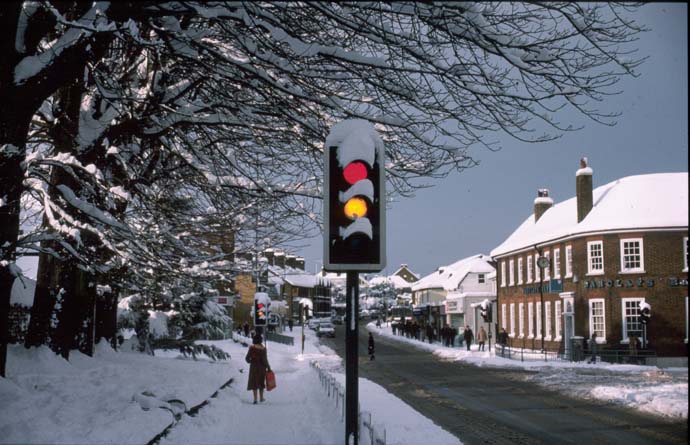
He had ascertained that the clock mechanism had been constructed around 1730 by William Gill of Maidstone and that this originally operated an hourly strike on the tenor bell. Apparently the peal of bells go back to the l6th century and the treble and No. 2 were provided by parishioners in 1913 in memory of King Edward VII and the Coronation of King George V and Queen Mary. Mr Lake suggested that the chestnut trees on the grass bank be removed and new trees planted in the churchyard, this would have thrown the Church tower into more prominence and given a wider vista along the High Street. Apparently the Vicar at that time was quite keen on the project and thought that a small additional contribution could be made. The arguments in Committee created our first real divisions, the Church scheme seemed to follow a precedent but a most vocal group considered it wrong in principle to apply money, which had been raised by residents of all faiths and none, upon the Parish Church. The arguments that everyone would view the clock were not persuasive enough.
That is why an ‘English Electric’ Arctic clock is still situated on Barclay’s Bank building with a plaque to the left of the front door. Incidentally Gillingham Borough Council maintained it until 1998 when Medway assumed responsibility. I have frequently telephoned when it has stopped and I hope that others will do the same. The present officers are Mr Strila and Mr Dray on 331151. Perhaps our Rainham Councillors will also note the arrangement which has been reasonably honoured for 50 years but Councils do need reminding at times.
Freddie Cooper
- Details
- Category: History Articles
The Berengrave Estate was one of the main large estates in Rainham. Situated along the length of Berengrave Lane, it had been the Queen Court Estate before it was sold by auction in 1824.
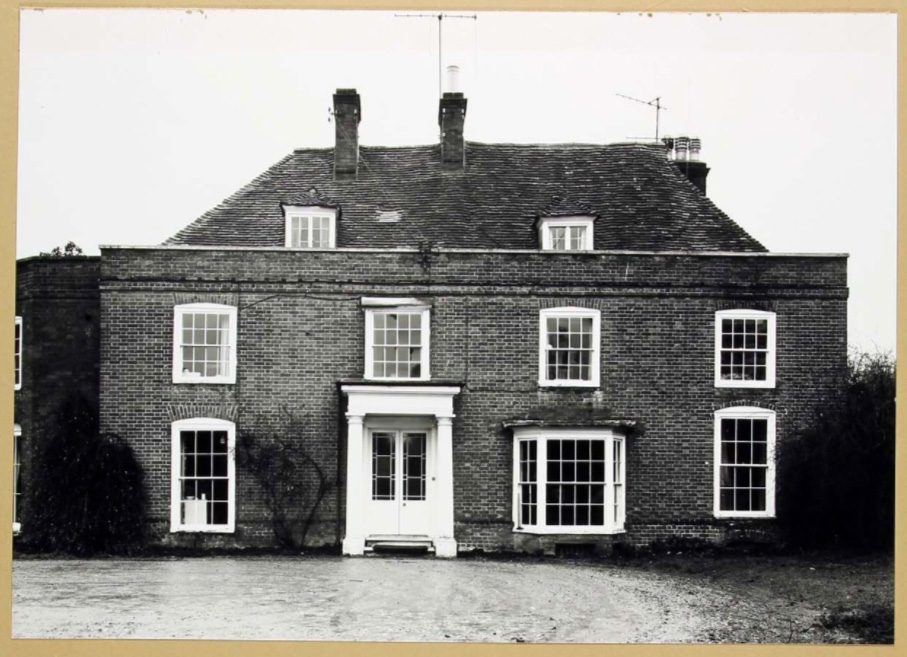
The Holmoaks area is built on the part of the Berengrave Estate, where the actual house stood. Chilton Court seems to be the the site of the actual Berengrave House. Several walls in the area are old boundary walls of the house and were retained as much a possible when the modern estate was built.
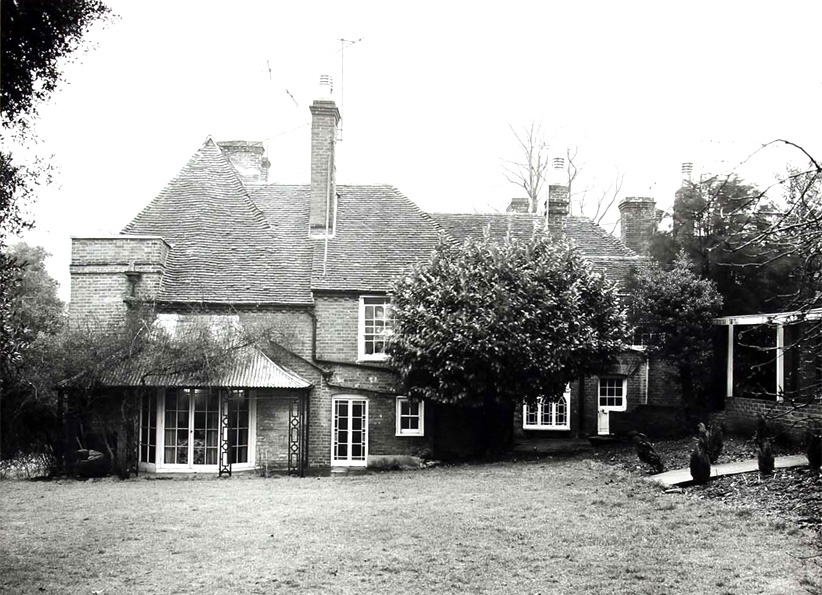
The Chilton Court development has actually got 16 houses, not 14. The other two are actually in Berengrave Lane, next to the white bungalow. Those two and the two next to them in Chilton Court are built, it was said, in the carriage drive to the big house. The big house had cellars, which is a bit worrying........Presumably they were made safe when the development was done. It is thought that the house lay diagonally across the site, so it’s possible the cellars are actually under the road. No one has disappeared yet, as far as we are aware.
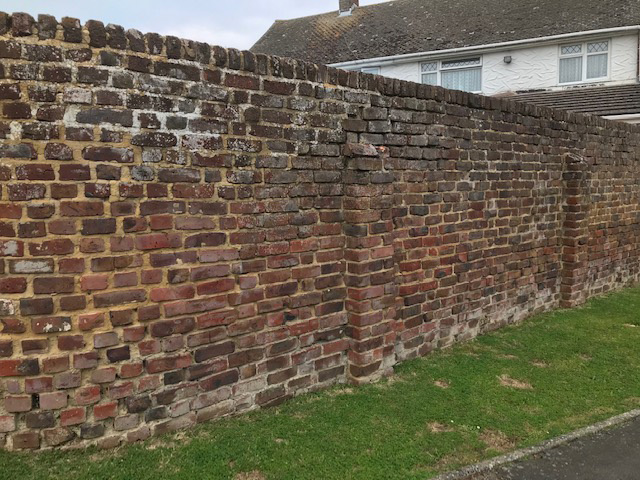
The well found in one of the gardens has had to be filled in as it was rather dangerous.
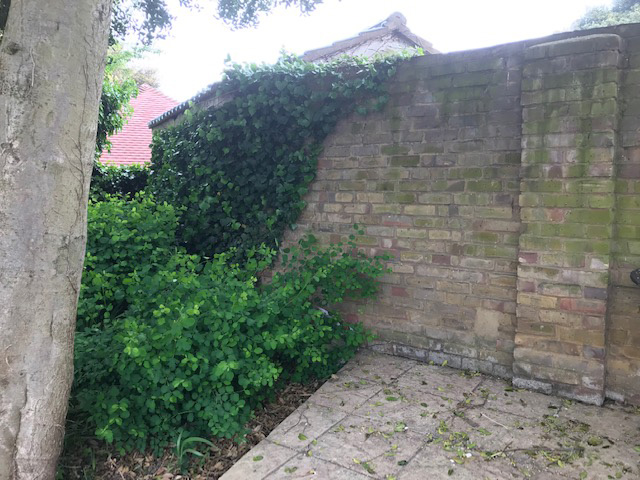
Location of the estate compared to the modern road layout
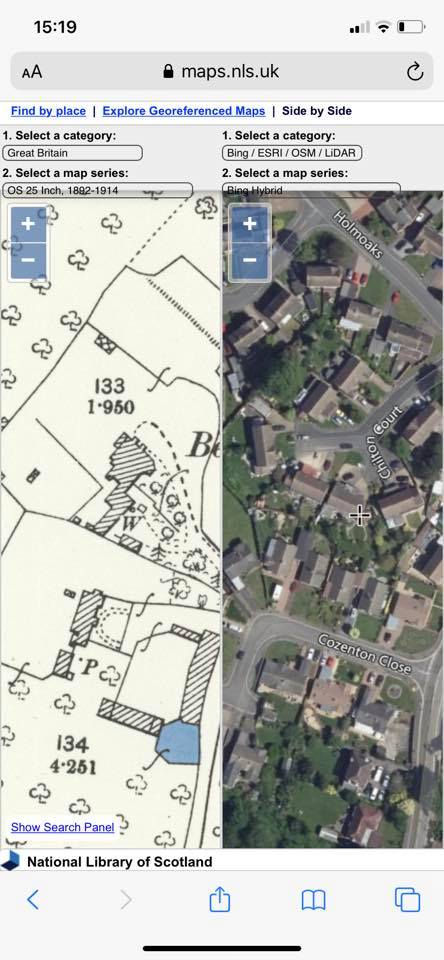
The extracts from the following document seems to be associated in some way with a decision about the future of Berengrave House. No idea what this was in relation to, but the actual typewritten document is not very well presented or written.
This is a small section from what was probably a longer report written around 1969 relating to the Berengrove Park Nursing Home, Berengrave Lane, Rainham.
It goes on to say “I shall report on three aspects of the above property’
1). It’s historic and aesthetic value
2). It’s state of repair.
3). It’s potential for conversion and future use.
“Occupation of the site can apparently be traced back to Doomsday when it was owned by the Crown and used for a hunting lodge. This oldest building being destroyed in a relatively recent fire.
The land was given in alms by the Crown to St Catherine’s hospital and leased to Rochester Cathedral who used it together with Cozenton as a monastery.
The existing building dates, I would suggest, in parts from the 16th Century to the present time, the main front being late 18th century.
The building does possess a picturesque charm resulting from the mellowing by time of a piece meal construction but could not be described as a good example of any of the periods of architectural style represented in it”.
The state of repair section indicates that it leaves a lot to be desire in terms of the condition of the roof, walls, floors, structural woodwork, chimneys, windows and electrical wiring amongst other things.
“Assuming that their present condition would require the replacement of ground, first and second floors thus enabling changes of level the potential for conversion with a great deal of work and the possible incorporation of lift might possibly make it able to continue in its present use or as an old people’s home. Conversion to flats might be possible, or offices for an organisation requiring mostly small spaces. Or it might be employed as a children’s home, but would be lacking any larger spaces for a school or youth club”.
The conclusions go on to say: “It seems doubtful whether this building should be saved on aesthetic grounds, but should it be extensively repaired and altered it would make an attractive building”.
All floors and the roof would need to be replaced, brickwork repointed and joinery replaced for safe occupation.
In 1971 the houses in Chilton Court. where it seems likely Berengrave House stood, just off Holmoaks, were built.
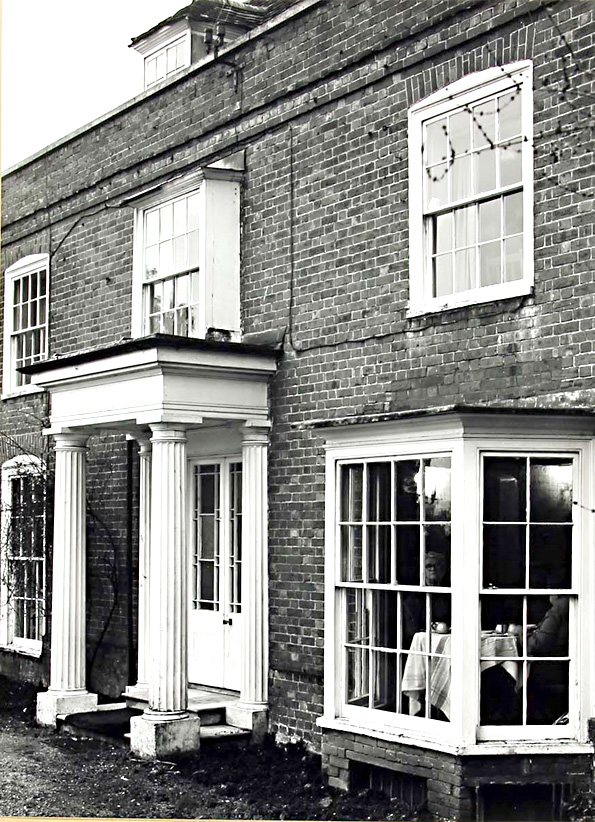
——————————————————————————————————————————
From a letter from Alan Major in 2019 when shown the copy of Action Forum about Berengrave House.
Is the Berengrave House in Berengrave Lane the same one that had an orchard down to the Cricket Field with a photo of the boys by the gate in the traffic-less lane?
I went to that house many times when a retired Col Iremonger and his wife lived there in the 1940s-50s. He was involved with various organisations and at the local printers where I worked (Panda Press) we did his varied printing, forms, instructions etc.
Surely they haven’t demolished that lovely old house?
Me and my father used to pick some of his fruit for him; for some reason he had a lot of damson trees and we picked them. We were paid by the hour, otherwise it would have taken a month of Sunday’s to fill a Kipsey bucket for a fixed sum.
One Saturday afternoon I was in the garden at 21 Tufton Road when a hit and run German bomber flew over the area. The bomb doors opened and a large bomb was dropped out. He was obviously intending to destroy the bridge in Berengrave Lane carrying the railway line but the bomb veered away from the line and fell in Col Iremongers orchard and smashed all the greenhouses’.
Following the publication of this article Robin Kemp posted a couple of photos of metal artefacts he'd discovered in his garden. One appears to be part of the fence that originally surrounded the front of the house and the other seems to be some form of agricultural tool.
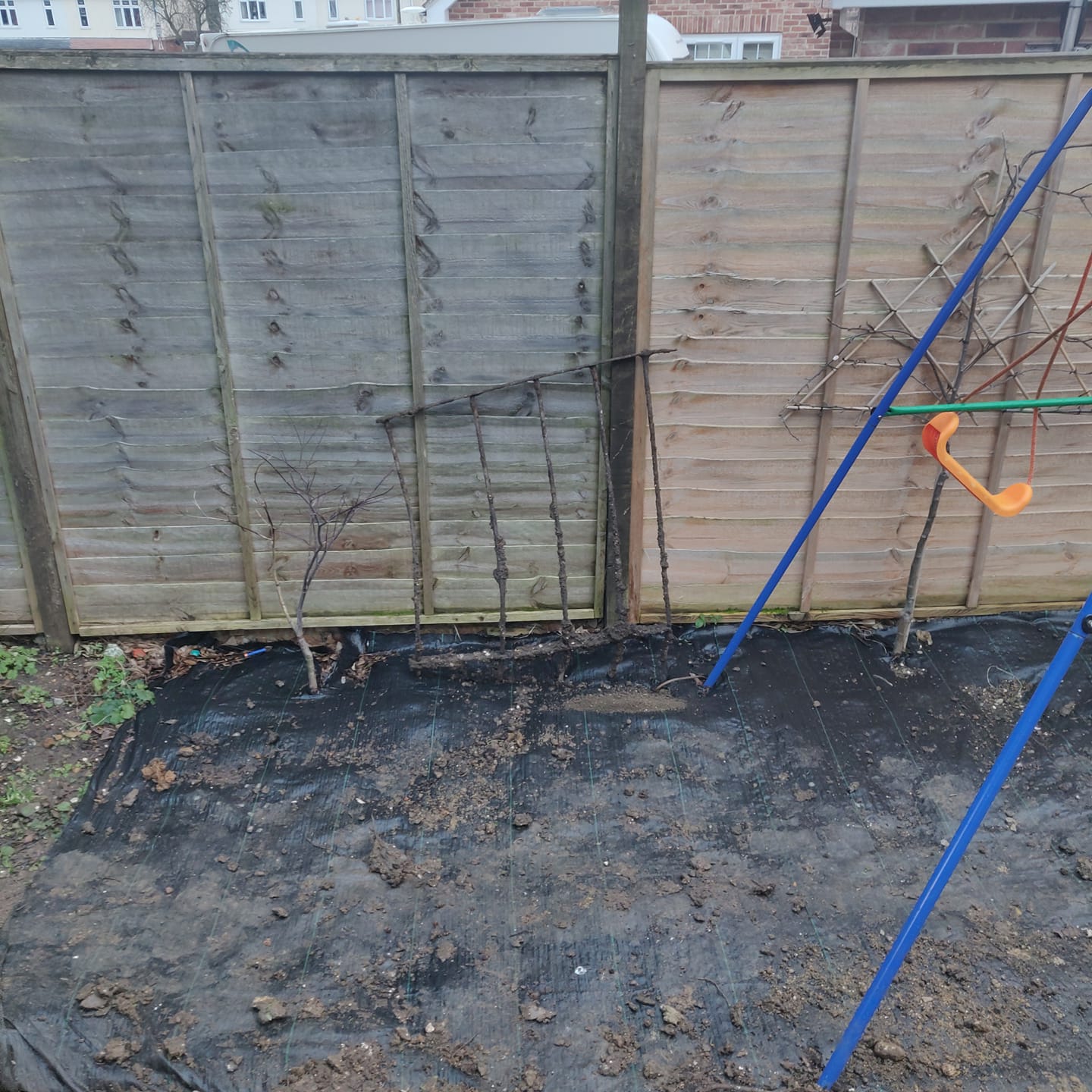
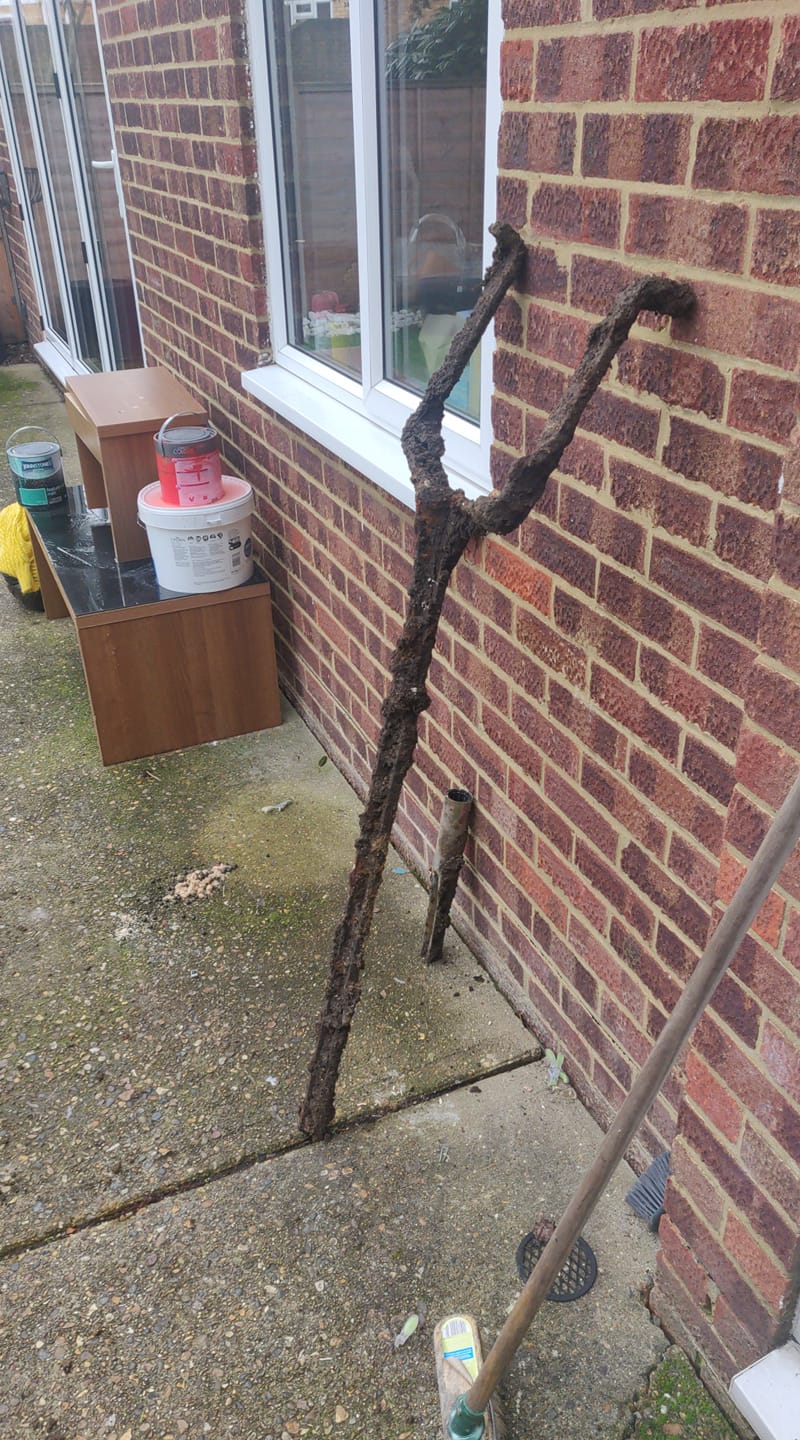
- Details
- Category: History Articles
Memories of Rainham - MEMORIES OF RAINHAM SCHOOL FOR BOYS
Dear Editor,
In reply to Michael Croucher’s article on Rainham Secondary School for Boys in December 2000 AF, like many old Rainham boys, my brother and I attended the old Orchard Street School, now St Margaret’s Junior School. I started there in September 1945, leaving in December 1949 as a prefect. I was somewhat surprised that Mr Croucher didn’t mention the backbone senior staff, namely Harry Thomas (Science) and Bert Newell (Art). Both were on the staff before the war along with others like Mr Sargeant. The names of others, after more than half a century, I sadly can't recall. Mr Smith I can recall, however, was headmaster when my brother Frank and I began there; although short in stature he ruled with a rod of iron. During our second and third year Mr Smith retired, to be replaced by Mr Bacon, who I recollect swept down the hall for his first assembly complete in black gown to the amusement and sniggers of all us boys sat as normal cross-legged on the floor.
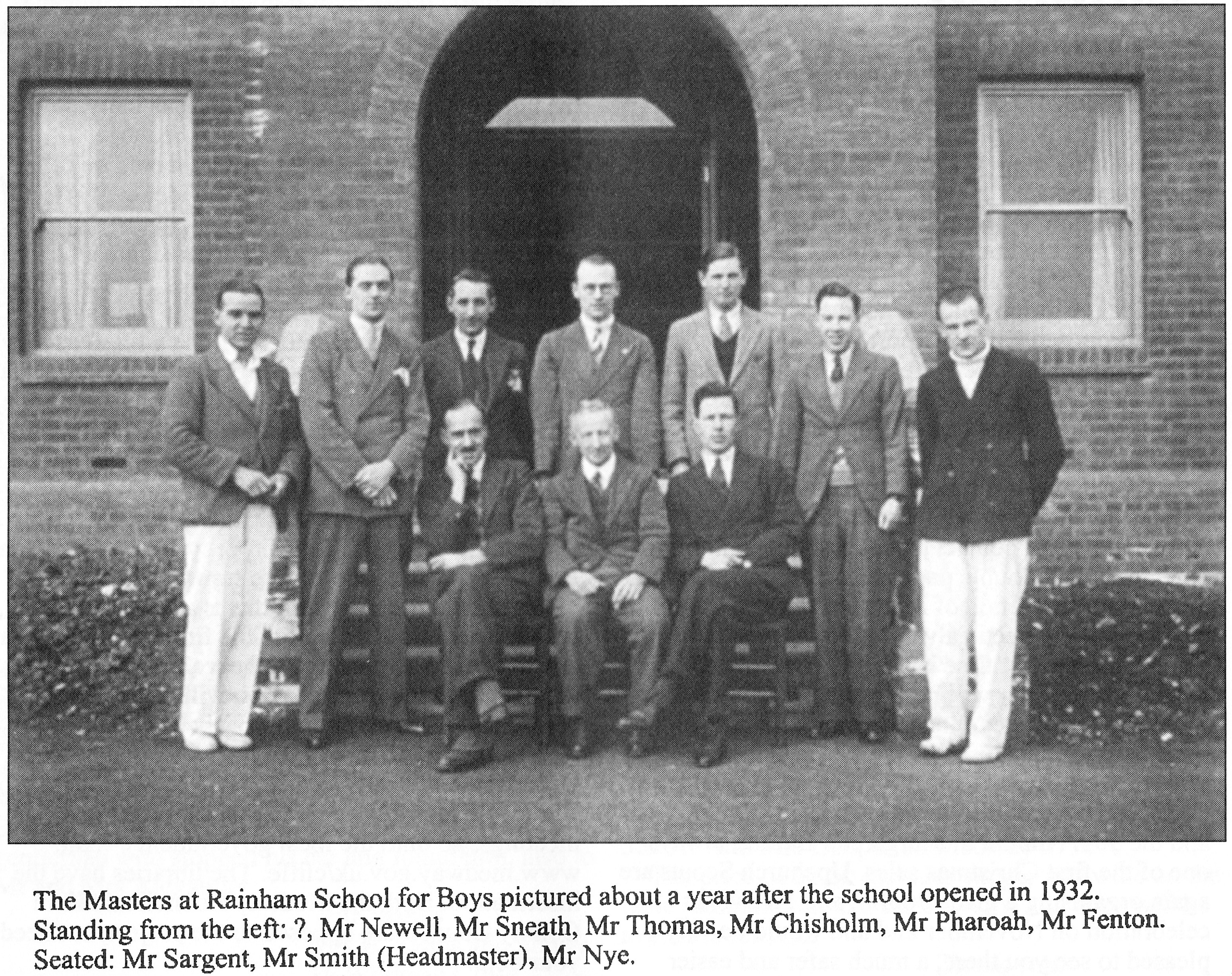
Other staff I can call to mind with respect are Bill Taylor, my old form master, whose old Morris car I have helped to start with a push with the help of other lads on cold nights after school. Teachers with cars were a rarity in the 40s and 50s. Harry Thomas did own an ageing pre-war Austin Six I remember. Mr Sargeant I remember well with great respect; he taught woodwork and TD. Sadly he died during my final year. I recollect all of us prefects led by (Bomber) Ronald Ware, headboy, attending his funeral at Rainham Church. Mr Smith taught us metalwork assisted by Mr Clark who came to the school on interview in his Royal Naval Chief's uniform. Mr Johns taught us history, I have him to thank for my interest in the subject which has lasted a lifetime. Like Mr Croucher I too have been on the receiving end of Mr Brown’s size 12, assisted by an overweight Mr Morris, who also took us for music before the arrival of Alf Springate.
Maths was taught by Billy Bones as we called him. Mr Bowden was his real name — he had an amusing habit of rhyming a boy's name to what might happen if he didn’t stop talking. A great friend of mine was Alan Barrett Danes. Mr Bowden would recite ‘I’ll give you such pains Danes’. Mr Patterson taught us how to grow spuds in a straight line in the school garden, when all we were really interested in was looking at the girls in the school next door, namely Rainham Girls. Although both schools occupied what was in reality one building divided into two schools, the consequence if caught eyeing one of the girls while in the building was a fate too dire to mention; however, in the school garden it was permissible, resulting in rows of spuds far from straight and a l great interest in gardening or rural science as it later became.
The school in Orchard Street in 2003, now St Margaret's Infants and Junior School
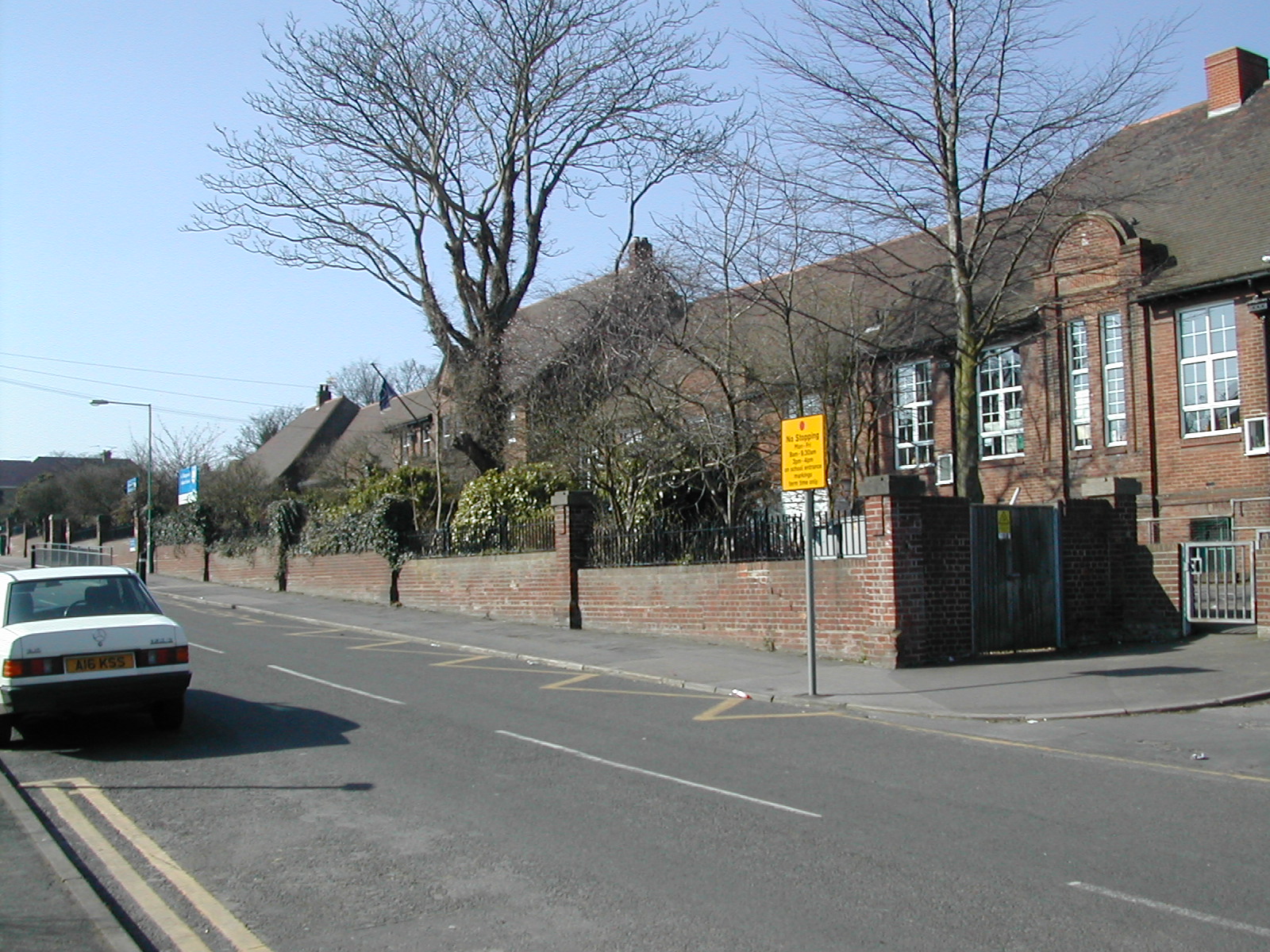
Careers education was almost non-existent in those initial post-war years, apart from the odd school outing or a visit from some heavily ringed naval officer from the Dockyard. I can call to mind going only on one visit to a building site which today is Damson Way, being told as we clambered in and out of unfinished houses (no hard hats in those days) that many building trades would be taught to us if we became apprentices. The foreman emphasised that the building site language would come naturally. This was said in response to a barrage of newly acquired grammar from young apprentices who only the previous term had been our fellow pupils at Orchard Street. The late Harry Thomas, and especially the late Herbert Newell gave me the push and the incentive I needed to take the first initial steps towards teacher training and qualifying as an art teacher in 1957.
Over the intervening years Bert became a good friend I was privileged to be invited to Mr Bacon’s retirement function at the newly built Howard School. After 42 years in the job I enjoyed I too am now retired and have a lot to look back on thanks to Rainham Boys’ at Orchard Street.
(Howard School below)
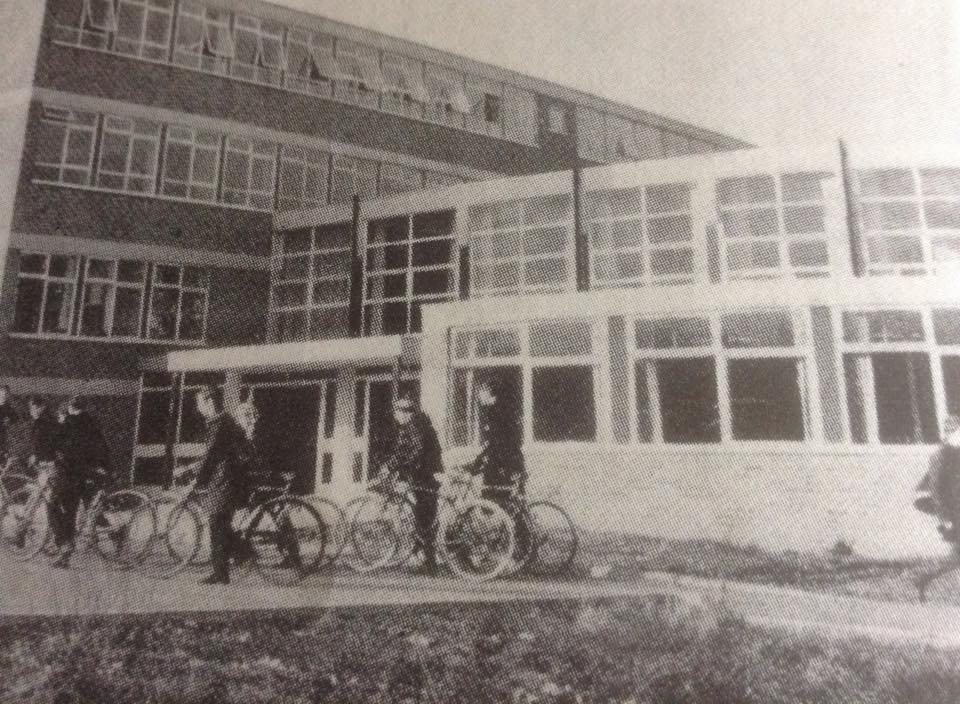
John K. Austin
Retired Schoolmaster
- Details
- Category: History Articles
Subcategories
Historical tales Article Count: 3
Historical tales
Rainham Life Article Count: 10
Rainham Life
Local Events Article Count: 48
Local Events
Photos Article Count: 143
Photos
Action Forum Article Count: 231
Action Forum is a free monthly magazine that is distributed to the Rainham area covering Wigmore, Parkwood and Hempstead as well. This archive covers old copies of the magazine dating back to its initial publication in 1969 and give a fascinating glimpse into life in Rainham over the last 50 years.
Link to Article Index - Action Forum Index - Photos and Articles from 1969 onwards
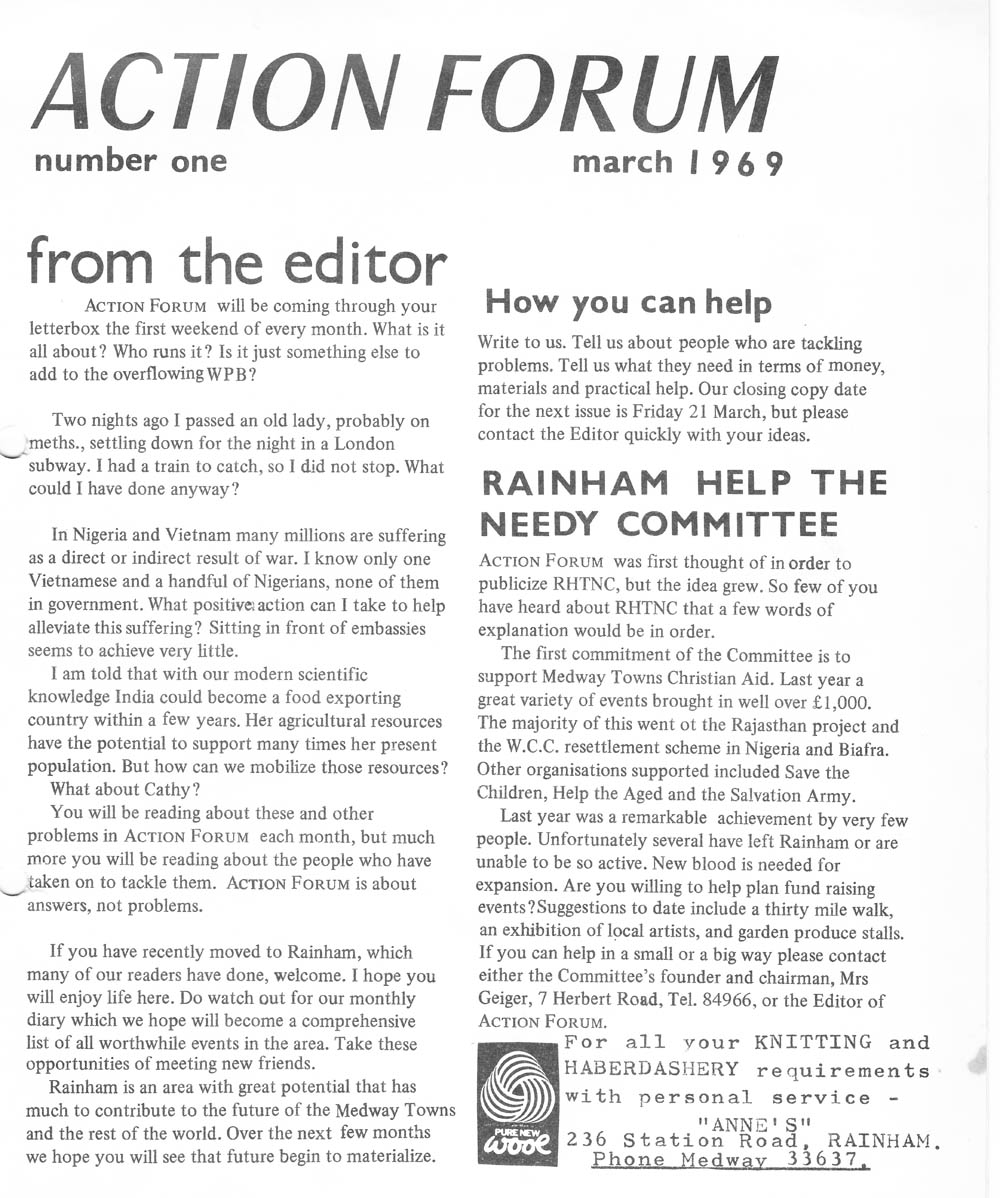

Page 2 of 9


